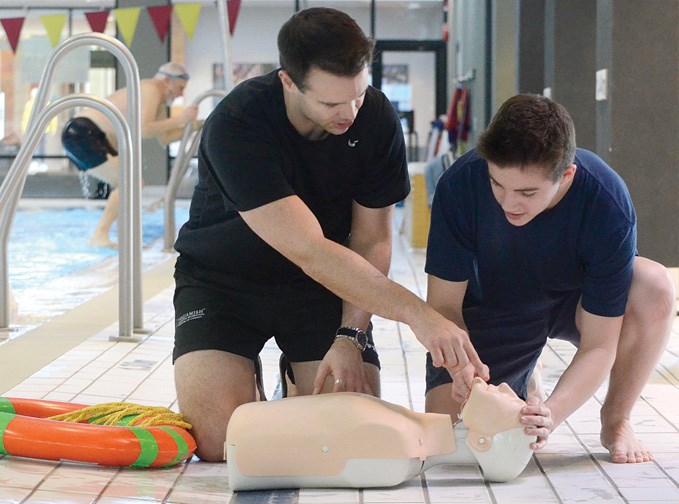A new program offered by the West Vancouver school district aims to help get students on the “fast” track.
The First Aid Swim Training, or FAST, program gives high school students the skills and training to become lifeguards.
“This is a program that is probably the first of its kind, as far as we know,” says Dave Dickinson, Rockridge secondary teacher and program leader, adding the school district decided to run the program to allow students to pursue an area of passion and develop a skill set at the same time.
Dickinson says the program is designed to allow students to complete their prerequisites to enrol in the National Life Guard Course. The students will earn credits for Emergency Response Leadership 11 and Lifesaving 11, several lifeguarding and first-aid programs as well as Physical Education credit.
“This program also combines their physical education component for the year so they’re getting both the first aid knowledge as well as the physical education.”
Bringing together all the components allows for more practice time and cohesive instruction, says Dickinson.
The West Vancouver Aquatic Centre will play host to the program and 24 students will be accepted. The program is open to students in grades 9-11. Students are chosen through an application process that includes an evaluation of their swimming abilities.
“They need to have basically functionally proficient strokes in the water, so I’m not expecting kids that have done swim club to necessarily be the only ones that would do this,” says Dickinson. “If you’ve done swimming lessons and students that are at the level eight Red Cross program, they’re going to be fine.”
Dickinson, along with several lifeguard staff, will meet with the students at the pool prior to the program’s start date to evaluate their strokes and check if the students are compatible with the challenges ahead.
“The program is quite physical because they are learning techniques and skills that they would be later on using in their National Life Guard certification,” he says.
“Basically everything that has actually been covered in the Red Cross swim program but now we’re looking at these skills with an eye not necessarily for perfection of technique but is it proficient enough for them to be successful in this program.”
The program runs Tuesdays and Thursdays starting in September. Each day will consist of both a classroom and water component. Participants also receive a Wave Pass for the duration of the course, giving them access to both the West Vancouver and Gleneagles community centres.
“In the classroom component we’ll be looking at sort of the core first aid aspects, as well as the leadership requirements that an individual would need to engage in a rescue,” says Dickinson.
The water component will include swim drills, simulated rescues, core technical work (such as how to do spinal roll-overs), and learning how to deal with submerged victims. The course will also cover dealing with aquatic emergencies in the water and learning how to respond to a rescue in a safe manner.
Dickinson says the advantage of having it at the aquatic centre is that it allows for a diverse physical education component, including cross training on the seawall, gymnasium and climbing wall.
The program is also tailored to have a low instructor-to-student ratio, with one instructor per 12 students.
That way students will get more focused attention,” says Dickinson.
This story originally appeared in our Kids Biz special Spring Break feature.



